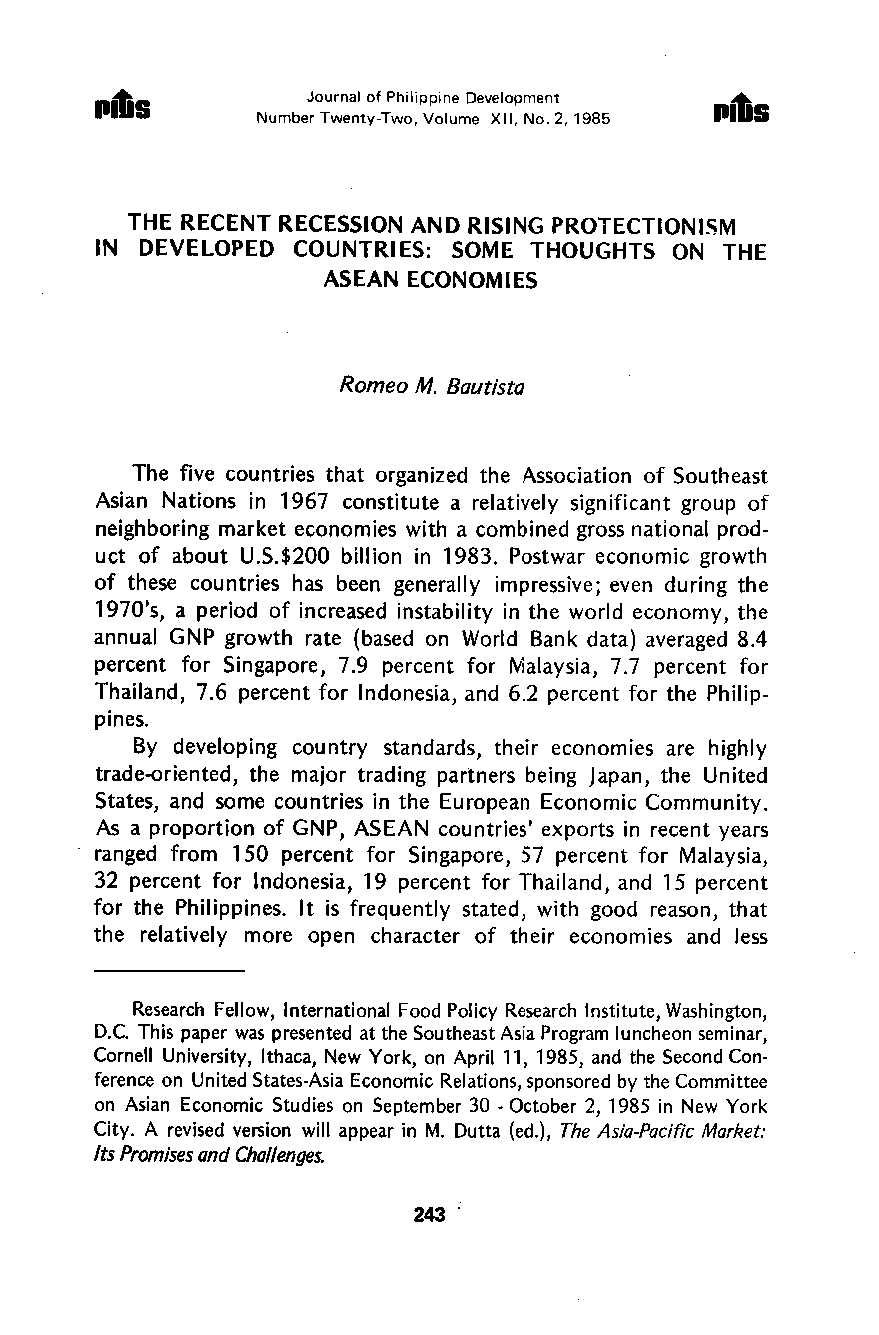Abstract
This issue explores key economic and trade dynamics shaping the Philippine economy, covering topics such as bilateral trade, financial liberalization, employment, agriculture, and infrastructure development. Two studies focus on Australia-Philippines trade between 1962 and 1981, analyzing its growth despite both countries’ declining share in global trade. Another article examines bilateral trade trends during the same period, emphasizing the importance of internal policy reforms to maximize economic gains. Financial sector reforms take center stage in an article assessing the impact of interest rate liberalization on loanable funds in the organized financial market, shedding light on how financial liberalization influences capital flow and economic stability. Another study investigates Australia’s trade preferences and their effects on ASEAN employment, particularly in the context of developing economies and their reliance on trade-driven job creation. Agriculture remains a crucial pillar of the Philippine economy, and one article argues that sustained agricultural growth is dependent on overall macroeconomic stability. Policy directions for the sector are discussed, with insights from a major convention on agricultural economics. A study on pilot agro-forestation development projects examines their impact on upland communities and their role in shaping broader upland development policies. Infrastructure development is analyzed through an empirical study on household electrification and its impact on provincial incomes.
Articles
SHARE
